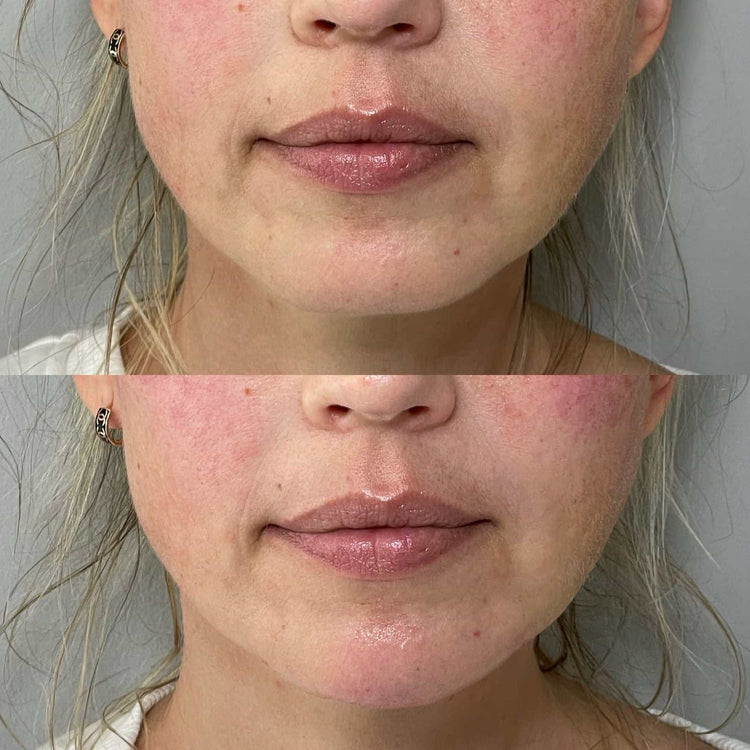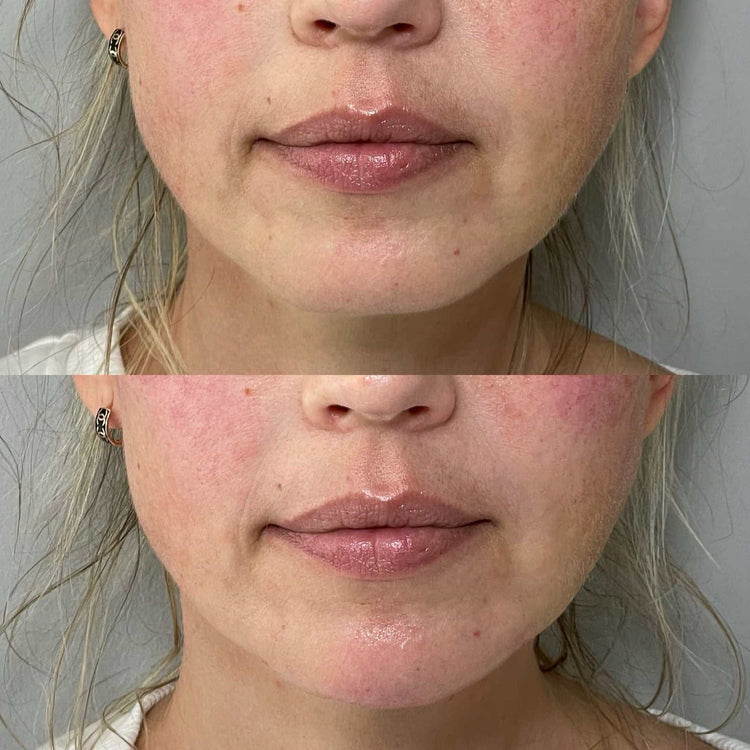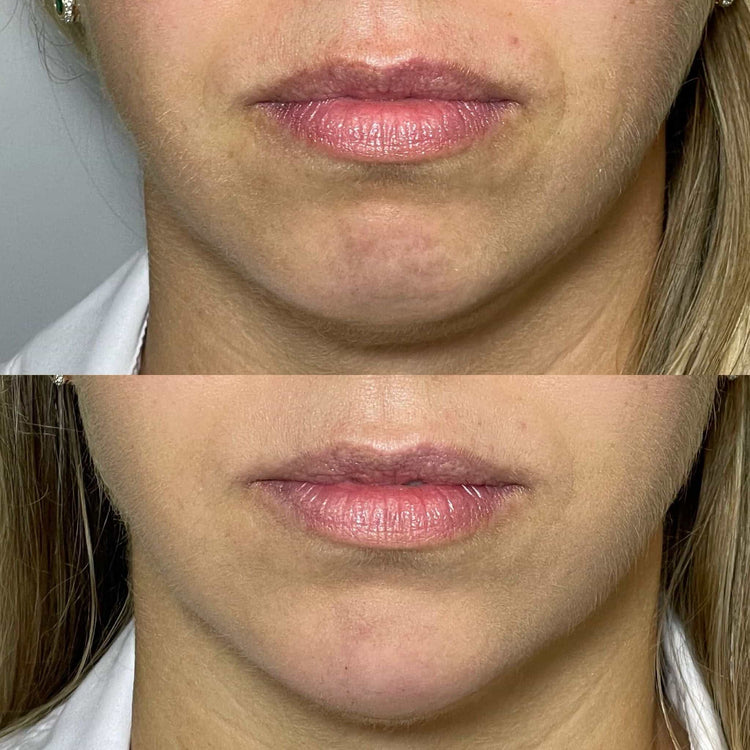Understanding Chin Asymmetry
Asymmetry in facial features, particularly involving the chin, is a common concern for many individuals. While slight variations are natural, pronounced imbalances can impact self-esteem and confidence. Fortunately, advancements in aesthetic medicine have provided solutions to address these concerns.

Causes of Chin Asymmetry

Chin asymmetry can stem from various factors, both genetic and acquired. Some individuals may inherit skeletal differences that lead to one side of the chin appearing larger or more prominent than the other. Developmental issues during childhood, such as facial trauma or uneven growth patterns, can also contribute to asymmetrical development. Additionally, habits like prolonged tongue thrusting or teeth grinding can exert pressure on the jaw and chin over time, potentially leading to subtle or noticeable asymmetries.
Types of Asymmetry
Understanding the different types of chin asymmetry is crucial for determining the most appropriate treatment approach. There are generally two main categories: structural asymmetry and functional asymmetry.
Structural asymmetry refers to physical differences in the bony structure of the jaw or chin. This type of asymmetry is often genetic in origin and can involve variations in the size, shape, or positioning of the mandible (lower jaw) or the mental prominence (the bony protrusion that forms the point of the chin). Functional asymmetry, on the other hand, arises from muscular imbalances or habits that affect jaw alignment.
Filler Treatment for Chin Asymmetry
Chin asymmetry can significantly impact self-confidence, but modern aesthetic treatments offer effective solutions. Filler injections have emerged as a popular and minimally invasive approach to address this concern.
Procedure Overview
Dermal fillers are injectable substances designed to restore volume and contour facial features. In the context of chin asymmetry, fillers can be strategically injected to augment the smaller side of the chin, creating a more balanced appearance.
During the procedure, a trained injector will assess the degree and type of asymmetry. Local anesthetic is typically administered to ensure patient comfort. The filler, usually composed of hyaluronic acid, is then carefully injected into specific points on the chin to add volume and shape.
The results of filler treatment for chin asymmetry are generally immediate and can last anywhere from 6 to 18 months depending on the type of filler used and individual factors like metabolism.
Compared to surgical procedures, filler injections offer several advantages, including minimal downtime, reduced risk of complications, and a reversible nature. However, it’s important to consult with a qualified and experienced injector to ensure safe and effective treatment.
Types of Fillers Used
Dermal fillers are composed of various substances, each offering unique properties suited for different applications in chin augmentation.
Hyaluronic acid (HA) is the most commonly used filler for this purpose. HA is a naturally occurring substance in the body that attracts and retains moisture, providing a plumping effect. It is also biocompatible and biodegradable, meaning it is well-tolerated by the body and gradually breaks down over time.
Calcium hydroxylapatite (CaHA) fillers are another option for addressing chin asymmetry. These fillers contain tiny calcium particles that stimulate collagen production, leading to long-lasting volume enhancement.
Poly-L-lactic acid (PLLA) is a synthetic filler that works by triggering the body’s natural collagen synthesis. While not typically used solely for chin augmentation, PLLA can be incorporated into treatment plans to address deeper asymmetries and provide lasting results.
Injection Technique
Dermal fillers are composed of various substances, each offering unique properties suited for different applications in chin augmentation.
Hyaluronic acid (HA) is the most commonly used filler for this purpose. HA is a naturally occurring substance in the body that attracts and retains moisture, providing a plumping effect. It is also biocompatible and biodegradable, meaning it is well-tolerated by the body and gradually breaks down over time.
Calcium hydroxylapatite (CaHA) fillers are another option for addressing chin asymmetry. These fillers contain tiny calcium particles that stimulate collagen production, leading to long-lasting volume enhancement.
- Poly-L-lactic acid (PLLA) is a synthetic filler that works by triggering the body’s natural collagen synthesis. While not typically used solely for chin augmentation, PLLA can be incorporated into treatment plans to address deeper asymmetries and provide lasting results.
Results and Recovery
For individuals seeking to correct facial asymmetry, dermal fillers offer a safe and effective non-surgical solution. These injectable substances are carefully placed by a trained professional to augment the chin, restoring balance and enhancing facial harmony.
Expected Outcomes
Results from filler injections for chin asymmetry are generally immediate, with patients noticing an improved balance and symmetry. The enhancement created by fillers can last anywhere from 6 to 18 months, depending on the type of filler used, individual factors like metabolism, and lifestyle choices.
Expected outcomes include a more harmonious facial profile, increased self-confidence, and a reduction in perceived asymmetry.
Downtime and Bruising
Downtime after chin filler injections is typically minimal. Most patients can resume their normal activities immediately following the procedure. However, some mild swelling or bruising may occur at the injection site, which usually subsides within a few days to a week.
- Avoid touching or massaging the treated area for the first 24 hours to minimize the risk of inflammation or infection.
- Apply cold compresses to reduce swelling and discomfort.
- Over-the-counter pain relievers can be taken as needed to manage any mild discomfort.
Bruising is also a common side effect of filler injections, but it tends to be temporary. The intensity and duration of bruising can vary depending on individual factors such as skin sensitivity and injection technique.
Considerations and Risks
While dermal fillers offer a minimally invasive solution for addressing chin asymmetry, it is crucial to understand the potential risks and considerations involved. These include the possibility of bruising, swelling, infection, and allergic reactions, although these are generally rare when administered by a qualified professional.
Choosing a Qualified Practitioner

Choosing a qualified practitioner is paramount when considering dermal fillers for chin asymmetry treatment.
- Seek out a board-certified dermatologist or plastic surgeon with extensive experience in facial aesthetics and filler injections.
- Request to see before-and-after photos of previous patients who have undergone chin augmentation treatments to assess the practitioner’s skill and aesthetic approach.
- Ensure the practitioner is licensed and utilizes sterile techniques to minimize the risk of complications.
- Schedule a thorough consultation where you can discuss your goals, expectations, and any concerns you may have. A qualified practitioner will listen attentively and provide personalized recommendations based on your unique anatomy and desired outcome.
Open communication with your practitioner is essential throughout the process. Discuss any medical history, allergies, or medications you are taking to ensure safe and effective treatment.
Potential Side Effects
Potential side effects associated with chin filler injections are generally mild and temporary. The most common side effects include bruising, swelling, redness, and tenderness at the injection site. These symptoms usually subside within a few days to a week. In rare cases, more serious complications can occur, such as infection, allergic reaction, or filler migration (where the filler moves outside the intended area). It is important to note that these complications are infrequent when the procedure is performed by a qualified and experienced injector using sterile techniques.
Choosing a qualified practitioner who possesses extensive experience in facial aesthetics and filler injections is crucial. Look for board-certified dermatologists or plastic surgeons who specialize in non-surgical cosmetic procedures.
It’s essential to have realistic expectations about the outcome of chin filler treatment. While fillers can effectively address asymmetry and enhance the chin’s shape, they cannot completely correct skeletal discrepancies.
Achieve natural results with Labiomental Crease Filler at It’s Me & You Clinic with Dr. Laura Geige
- What Is A Lip Flip Vs Filler - January 9, 2026
- What Does Lip Filler Contain - January 6, 2026
- What Are The Signs Of Overfilling With Bum Fillers? - January 3, 2026
